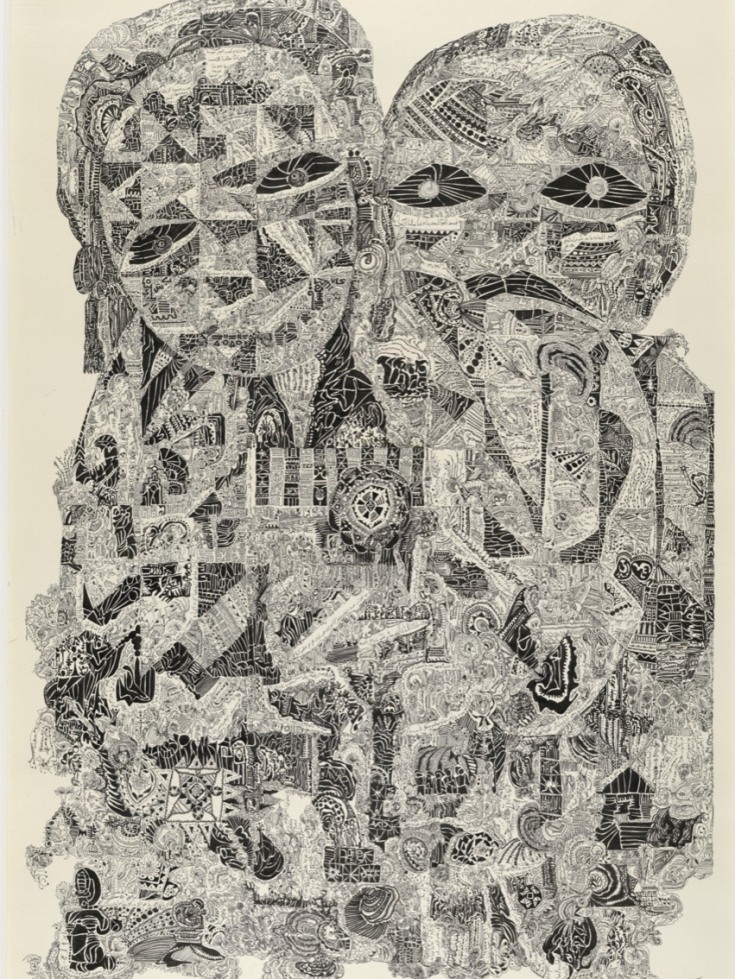The issue, named after the publication of Shi‘r (Poetry) magazine by Yusuf al-Khal in 1957, widely known and recognized for its massive influence on the development of modern Arabic poetry, seeks to supplement the magazine’s history and centrality with works “of other figures, magazines, and discussions that moved Arabic poetics away from classical prosody towards what has been called the modernizing of poetic verse.”
Coincidentally, the call for submissions was announced for this special issue while Nasser was working on her dissertation. Their goals were perfectly aligned: shed light on marginal figures. Nasser sent in an abstract on Laure Ghorayeb, a self-taught Lebanese poet, cultural journalist, and visual artist, whose work she had been drawn to since the days she was living and working in Beirut before joining Brown to pursue a PhD. Dima writes:

_.jpg) oems, Noir … les bleus (Black … the Blues), 1960 and prose, Iklīl shawk ḥawla qadamayhi (A Crown of Thorns Around His Feet), 1965, in relation to her civil war drawings Témoignages (Testimonies), 1985, this article reveals an inter-semiotic exchange on the page. It offers an interdisciplinary rereading of the modern cultural history of Beirut, revealing an interplay between literature and visual art, which allowed Ghorayeb to maneuver between aesthetic experimentation and political engagement at a time when nationalist and ideological divisions were being sown.”
oems, Noir … les bleus (Black … the Blues), 1960 and prose, Iklīl shawk ḥawla qadamayhi (A Crown of Thorns Around His Feet), 1965, in relation to her civil war drawings Témoignages (Testimonies), 1985, this article reveals an inter-semiotic exchange on the page. It offers an interdisciplinary rereading of the modern cultural history of Beirut, revealing an interplay between literature and visual art, which allowed Ghorayeb to maneuver between aesthetic experimentation and political engagement at a time when nationalist and ideological divisions were being sown.”